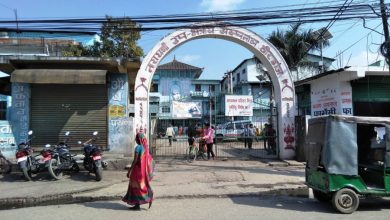Medicines for childhood cancer handed to government
Kathmandu, Feb 20: The first shipment of medicines for pediatric cancer was handed over to the government during a ceremony at the Ministry of Health and Population today.
A delegation comprising Dr. Rajesh Sambhajirao Pandav, the World Health Organization (WHO) Nepal representative, and Budhi Setiawan, Chief of Health at UNICEF Nepal Country Office, handed the medicines to Minister for Health and Population Pradip Paudel.
These medicines, received under the Global Platform for Access to Childhood Cancer Medicines—an initiative launched jointly by WHO and St. Jude Children’s Research Hospital—will be distributed to Bhaktapur Cancer Hospital, Kanti Children’s Hospital, Patan Academy of Health Sciences, and Bharatpur Cancer Hospital for treatment. The shipment is expected to be sufficient for Nepal for one year.
As per the agreement, Nepal will receive pediatric cancer medicines of 35 different types free of charge for five years (2025-2030). This arrangement was made following a March 27, 2024 agreement between Nepal, WHO, and St. Jude Children’s Research Hospital.
In his address at the ceremony, Minister Paudel stated that the government is focused on cancer prevention through the implementation of the Nepal Cancer Control Strategy. He also highlighted that the government has ensured free treatment for childhood cancer to eliminate financial barriers, ensuring that no child dies from cancer due to lack of funds. “We hope this assistance will play a crucial role in making cancer treatment more effective.”
The Ministry has committed to procuring refrigerators for four hospitals, as well as hygrometers for proper storage of the medicines, and will distribute them to the hospitals.
Each year, Nepal records around 1,500 cases of childhood cancer, but limited access to services means many children do not receive treatment. Only about one-third of these children have access to care. While the survival rate for childhood cancer in Nepal is just 30 percent, it exceeds 80 percent in developed countries.
RSS









Comments